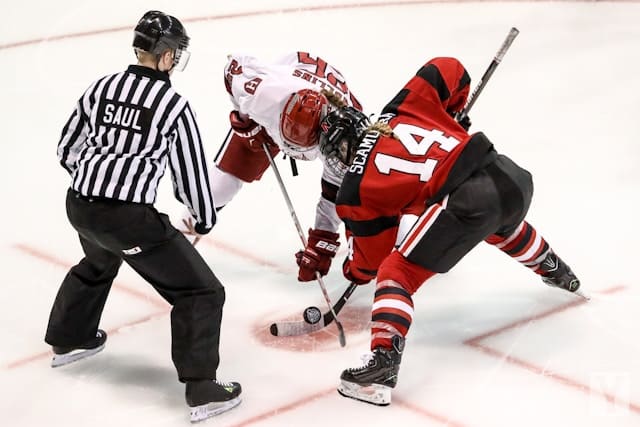How Can Data Analytics Improve Scouting for Potential Draft Picks in Ice Hockey?

The field of professional sports scouting has seen a seismic shift in the past decade with the advent of data analytics. The NHL (National Hockey League) is no exception to this trend. Traditionally, scouting in the world of ice hockey mostly relied on subjective evaluations from human scouts. However, the use of data analytics has heralded a new era, where player performance and potential can be assessed with a rich combination of empirical data and traditional scouting methods. This brings us to our central question: How can data analytics improve scouting for potential draft picks in the ice hockey?
The Emergence of Data Analytics in Ice Hockey
The NHL has been slow to embrace advanced statistics compared to other sports like baseball or basketball. However, over the past few years, more and more NHL teams have started to incorporate data analytics into their game strategy and player evaluation processes. The primary reason for this shift is the realization that numbers and data can provide a more detailed and unbiased perspective on a player’s performance.
Additional reading : Find your perfect gel blaster pistol: enjoy 20% winter savings!
In the context of scouting, data analytics can be used to evaluate a potential draft pick’s skills, performance, and predicting their future success in the NHL. The average NHL team generates and analyzes a staggering amount of data every year. This includes traditional box-score data such as goals, assists, and plus-minus, as well as more advanced metrics like Corsi, Fenwick, and Player Usage Charts.
The Role of Data Analytics in Player Evaluation
Data analytics plays a key role in evaluating the player’s performance. The key is not just to look at the raw data, but to interpret it correctly. For instance, a player might have a high average of goals per game, but if most of these goals are scored against weaker teams, they might struggle against stronger opponents in the NHL.
Also read : What Are the Most Effective Mental Rehearsal Techniques for Professional Poker Players?
An in-depth analysis of a player’s performance also includes studying their strength and weaknesses. For instance, some players might excel at scoring goals, but struggle with defensive play. Others might have excellent physical abilities but lack the technical skills needed to succeed at the NHL level. A thorough analysis can help teams identify these areas of improvement and provide targeted training to their players.
Scouting Beyond the First Round
Scouting isn’t just about finding the next superstar in the first round of the draft. It’s equally important to identify potential diamonds in the rough in the later rounds. Here, data analytics can be invaluable. By looking beyond traditional stats, analytical tools can identify players who have been overlooked or undervalued by other teams.
For instance, a player’s Corsi (a metric that measures shot attempt differential while at even strength) might be exceptional, indicating they are consistently creating scoring opportunities for their team. Such a player could be a valuable addition to a team, even though they might not have the highest goal or assist totals.
Implementation of Analytics in Scouting and Game Plan
The implementation of data analytics in scouting and game planning is a continuous process. It starts with collecting data from a variety of sources, including game footage, player stats, and even player interviews. The data is then processed, analyzed, and visualized to provide insights that can help in decision making.
For instance, analytics can reveal patterns in a player’s performance, such as their effectiveness in different game situations or against certain opponents. This information can be used to devise game plans that maximize a team’s strengths and exploit the opponent’s weaknesses.
Data Analytics and the Future of Hockey Scouting
The integration of data analytics in hockey scouting is still in its early stages, but the potential benefits are enormous. While traditional scouting methods will always have a place in the game, the use of data analytics provides a more objective and comprehensive evaluation of a player’s abilities.
In the years to come, it’s highly likely we will see an even greater reliance on data analytics in hockey scouting. As the technology improves and the amount of available data grows, teams that can effectively leverage these tools will gain a significant strategic advantage in the NHL draft.
While the future of hockey scouting is exciting, it’s important to remember that data is just a tool. It’s the interpretation and application of this data that will truly define the success of a team’s scouting efforts. So, the challenge for teams will be to find the right balance between traditional scouting methods and data analytics to identify and develop the next generation of NHL stars.
Utilizing Data Analytics in Central Scouting
Central scouting in the NHL is the cornerstone process for identifying and evaluating potential talent for future drafts. This process has been further refined with the use of data analytics. Traditional scouting methods often relied on the "eye test", evaluating players based on physical attributes, technical skill, and competitive spirit. While these elements are still valued, they are now complemented by the data-driven approach.
For instance, scouts can use data analytics to assess the consistency of a player’s performance over a draft year, in different situations, and against various levels of competition. Tools like expected goals (xG), a predictive measure of a player’s likelihood to score based on shot quality and location, can provide valuable insights into a player’s offensive potential.
Data analytics can also help teams scout players beyond the North American region, which has traditionally been the focus of NHL central scouting. By analyzing data from international competitions and leagues, NHL teams can identify promising talent from around the world and make more informed decisions about draft picks.
The role of data analytics in central scouting extends beyond player assessment. It can also provide insights into trends and patterns in the NHL draft, such as which types of players are more likely to be successful based on their draft position, whether it be a first-round pick or a late-round gem.
For example, data may show that defensive-minded players drafted in the second round have a higher success rate in the NHL compared to high school players with impressive offensive stats but lack experience against tougher competition. Such insights can help teams make more strategic draft decisions.
Data Analytics: A Game-Changer for Team Scouting
Team scouting is another area in which data analytics can be a game-changer. Traditionally, team scouting mainly involved studying game footage and conducting in-person observations. Nowadays, it includes a comprehensive analysis of player and team data.
Analysts can assess a player’s impact on team performance using measures like Corsi and Fenwick, which capture a player’s or team’s shot differential when on the ice. Such advanced metrics can offer a more nuanced understanding of a player’s contribution beyond traditional stats like goals and assists.
Data analytics can also support team scouting by identifying advantageous or vulnerable areas in opposing teams. For instance, if data shows that an opponent struggles to defend against fast breaks, a team can tailor its game plan accordingly.
Moreover, analytics can help in evaluating a team’s own performance. For instance, if a team’s expected goals (xG) significantly exceed their actual goal tally, it may indicate issues with finishing or shot quality, which can be addressed in training.
Conclusion: The Balanced Future of NHL Scouting
The integration of data analytics in the scouting process promises to revolutionize the way NHL teams identify and evaluate potential draft picks. However, despite the wealth of information that analytics provide, the human element of scouting remains crucial.
Data analytics can offer objective insights into player and team performance, but it is the skilled interpretation of this data, coupled with traditional scouting methods, that will shape the future of scouting. The "eye test", emotional intelligence, and understanding a player’s mentality and work ethic are elements that cannot be fully captured by data.
Striking the right balance between data analytics and traditional scouting methods will be a key challenge for NHL teams in the coming years. Teams that succeed in this will be well-positioned to identify and develop the next generation of NHL stars and gain a competitive edge in the world’s premier ice hockey league.
In conclusion, while data analytics is a powerful tool in the scouting process, it is not a magic bullet. It serves as a complement, not a replacement, to traditional scouting methods. The future of scouting in the NHL lies in the effective combination of these two methodologies. As the saying goes, "In God we trust, all others bring data." But let’s not forget, they should also bring their hockey sense.
